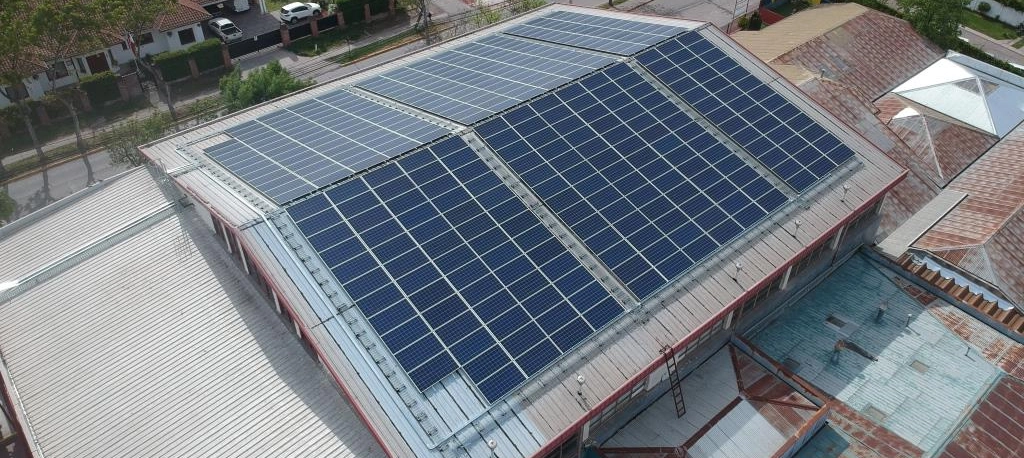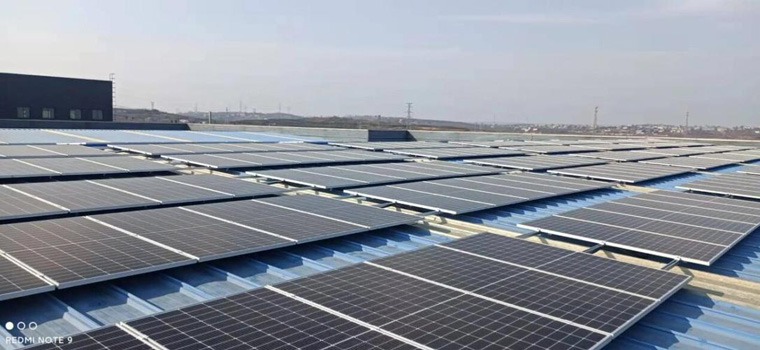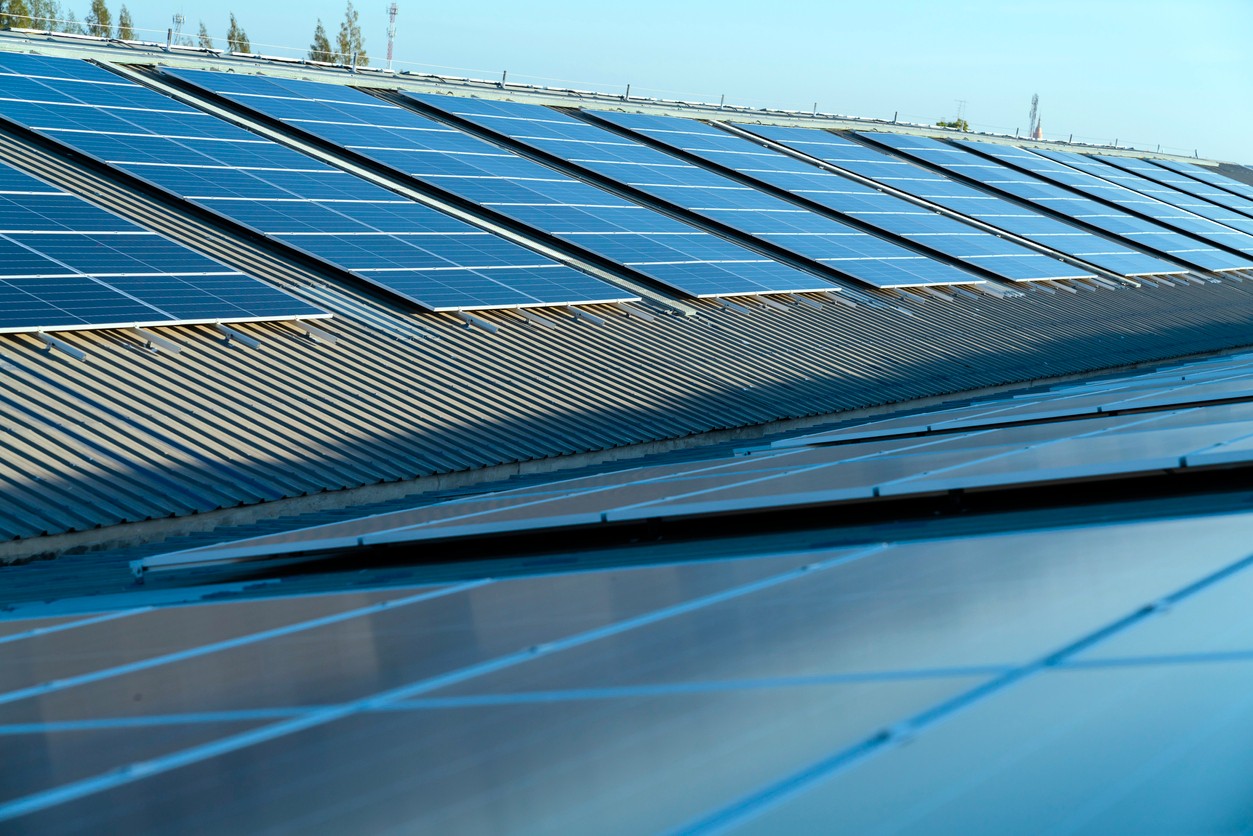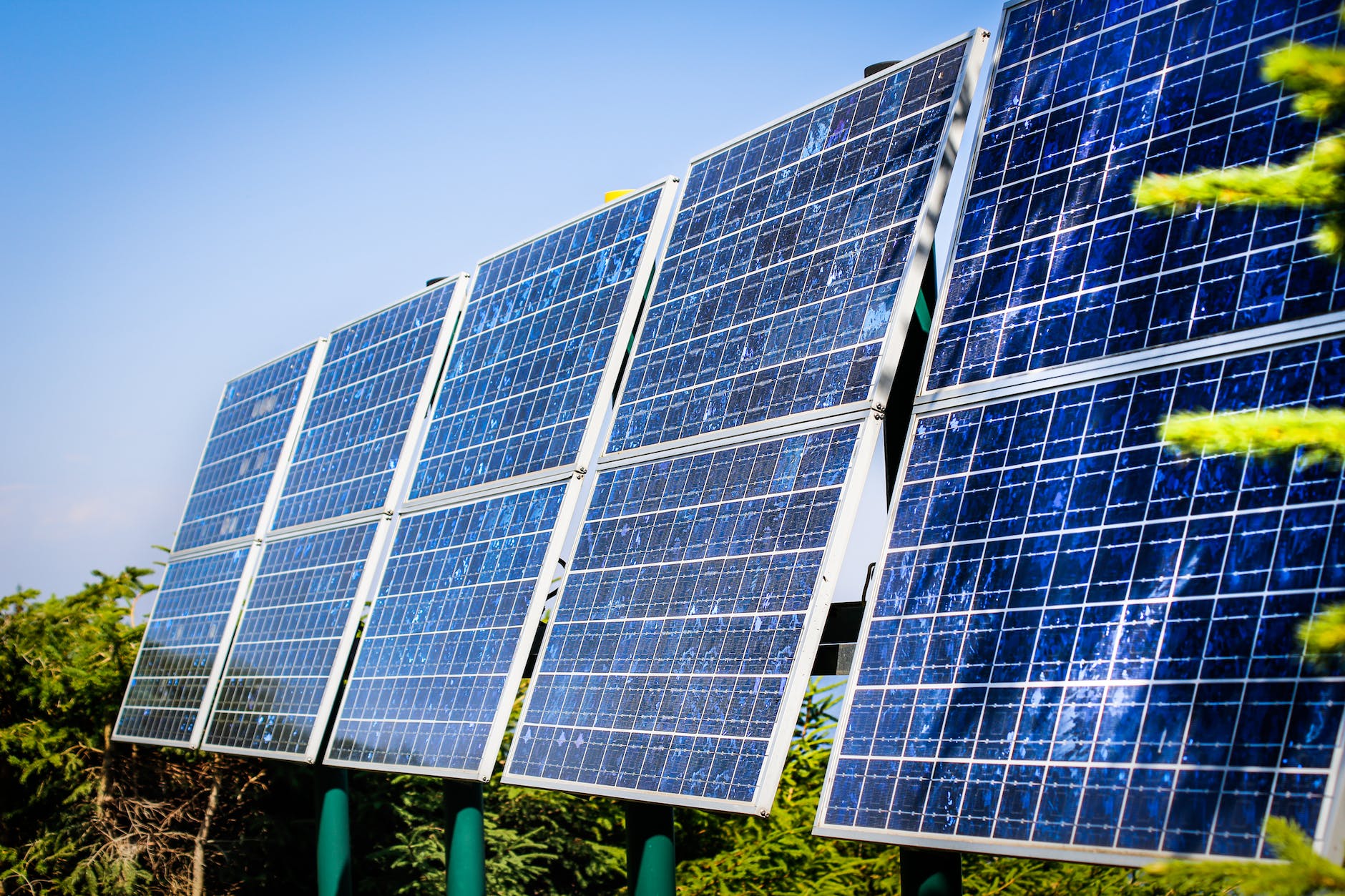A solar module, generally made up of hundreds of photovoltaic cells, is an energy-conversion device converting sunlight into electrical power. Install the solar panel facing south and at an optimal tilt angle to receive as much sun as possible to maximize efficiency and stability.
Solar Basics
The principle of a solar module, or a photovoltaic module, is to convert sunlight directly into electricity by the photovoltaic effect. A photovoltaic module is made up of interconnected photovoltaic cells, also known as solar cells, each individually made from silicon material that absorbs photons and excites electrons inside the semiconductor material, thereby producing DC electricity.
Applications range from individual rooftop installations to commercial and large-scale photovoltaic power plants. Indeed, the growth in the solar market continues, as, within 2023 alone, there has been an addition of 320 gigawatts to the global installed capacity of photovoltaic power, according to statistics by both the International Energy Agency and the International Renewable Energy Agency. Compared to traditional energies, the photovoltaic module has many advantages, such as Pmax stabilization, fewer maintenance needs, and clean with no emissions. Applications play an important role in adjusting the energy structure of the world.
Module Types
According to the materials, manufacturing procedures, and application scenarios, solar modules can be divided into three categories: monocrystalline silicon, polycrystalline silicon, and thin-film solar modules.
Monocrystalline Silicon Photovoltaic Modules: This is a photovoltaic module using high-purity monocrystalline silicon as the material, and it has the highest photoelectric conversion efficiency, generally between 20% and 24%. Due to the relatively uniform crystal structure and lower resistance of monocrystalline silicon, even in an environment with adequate sunlight, it could maintain a high power generation efficiency. Manufacturing is also more expensive and complicated. However, their efficiency advantage makes them suitable in applications of high performance such as residential rooftops and commercial buildings where the space is limited but power demand is high. Typically, monocrystalline silicon modules are deep black in color with a more uniform look that is somewhat aesthetically appealing.
Polycrystalline Silicon Photovoltaic Modules: The purities of silicon material utilized in polycrystalline silicon photovoltaic modules are a little lower compared to those used in monocrystalline silicon. The crystal structure inside the cell is also less uniform, which causes the resistance to be slightly greater and the photoelectric conversion efficiency a little lower, normally between 15% and 18%. Therefore, a relatively uncomplicated and less cost-consuming process for making polycrystalline silicon modules makes them appropriate to apply in places where the goal of economy is vital, such as large-scale PV power plants. Polycrystalline silicon modules usually take on a blue color and reflect a peculiar luster under sunlight; hence, they are the preferred options for most public facilities and industrial projects.
Thin-Film Photovoltaic Modules: Cadmium telluride, copper indium gallium selenide, and amorphous silicon are the main types of thin-film photovoltaic modules. The efficiency in energy conversion remains low in the range of about 10% to 12%, but they are lightweight and flexible and therefore would find their application in very particular applications such as building-integrated photovoltaic projects and portable charging devices. Compared to crystalline silicon modules, thin-film modules have lower production costs and can maintain relatively stable output in low-light environments. Therefore, they are especially suitable for installations with space constraints and irregular shapes.
How It Works
Solar modules work on the principle of the photovoltaic effect. The energy of the photons in sunlight absorbed by the semiconductor material of the photovoltaic cells excites electrons from the valence band to the conduction band, creating free electrons and holes. These free electrons, under the action of an electric field, will move around an external circuit as an electric current, thus providing direct current output. The process is dependent on the intensity of light and properties of cell material, no mechanical structure is involved; hence, the method classifies into a static power generation method, thus providing low maintenance and high reliability.
The efficiency of the PV modules is influenced by the lighting conditions, module temperature, and the shading factors. The output efficiency in low-temperature conditions is higher, while at a raised temperature the efficiency decreases; this characteristic is called the temperature coefficient, which usually ranges between -0.3% and -0.5%/°C. Modern photovoltaic modules incorporate anti-reflective coatings and materials that can transmit light with the purpose of improving their power generation capability in low-light conditions. High-clearance modules can retain as much as 80% of output efficiency in low-light conditions, allowing photovoltaic systems to generate some power on cloudy conditions or during early mornings or evenings, thus improving their overall energy production.
Energy Output
Conditions that may affect the energy output of photovoltaic modules include rated power, installation angle, radiation intensity, temperature conditions, and environmental shading. Rated power usually describes the peak power Pmax of a module, which is the output power measured under standard test conditions. Standard Test Conditions (STC) are defined as 1000 W/m² irradiance combined with a cell temperature of 25°C. For instance, a solar module rated at 450W can theoretically produce 450 watt-hours of electricity per hour in ideal lighting conditions.
The annual power generation of one photovoltaic system differs according to the location. For example, the annual average radiation resource in Xinjiang reaches 1800 kWh/m²; for the eastern coastal area, it is only 1100 kWh/m². An appropriate choice of installation site, with optimization in tilt and orientation of the modules, will effectively improve the energy output of a system. Besides, the power generation can be much improved by bifacial modules using ground-reflected light when they are installed on high-reflectivity surfaces. In general, the power gain by using bifacial modules lies between 10% and 20%.
In reality and actual application, modules usually work with energy output lower than the rated value due to efficiency degradation and meteorological factors. The average conversion efficiency of the photovoltaic modules, according to year-round averages, lies between 15% and 20%. Therefore, a 10-kilowatt installed capacity photovoltaic system could be able to generate between 10,000 to 15,000 kWh of electricity annually. A cleaning process of the module surfaces generally comes before long-term projects to minimize shade resulting from dust and bird droppings.
Efficiency Factors
Various factors act upon the efficiency of solar modules, which principally are material characteristics, temperature coefficient, lighting condition, and environmental factors.
Material Characteristics: The photoelectric conversion ability of the material is basic to module efficiency. Monocrystalline silicon has higher carrier mobility and less resistance to enable the conversion of light energy to electricity more efficiently. While the crystals of polycrystalline silicon are only somewhat uniform, the result is a material with only moderately higher resistance, hence less efficiency. The lowest efficiency is that of thin-film materials, which offer some interesting advantages in specific application scenarios. High-quality encapsulation materials, including but not limited to low-iron glass and high-transparency EVA film, reduce reflection and absorption losses and boost the light transmittance or absorption efficiency.
Temperature Coefficient: Temperature largely influences the performance of photoelectric conversion. It results in a 0.3-0.5% drop in module output efficiency when the temperature rises by every 1°C. Because the temperatures are very high in summer, the temperature of the module may rise to over 60°C and result in a serious decline in efficiency. So, in order to reduce the impact brought about by temperature, most photovoltaic power plants used cooling structures and mounting brackets with high ventilation while designing to reduce the negative impact brought about by temperature on the efficiency of power generation.
Lighting Conditions: The larger the light intensity is, the larger the output current of the module will be. In any case, too high a light intensity can easily lead to a rise in temperature, thereby affecting efficiency. Therefore, anti-reflective coatings and high-transmittance encapsulation materials can reduce the reflection losses quite effectively in areas with high radiation. Most of the photovoltaic modules today are also provided with self-cleaning glass and hydrophobic coatings to ensure more light transmittance in harsh weather conditions and avoid water accumulation on the surface.
Environmental Shading: The installation environment also affects the output performance of modules; shading and dust accumulation can result in significant reductions in power generation. In the design process of the photovoltaic power plants, there will be minimized shading, and modules are designed to increase the self-cleaning ability of modules. For maintaining long-time high-efficiency output, a lot of photovoltaic power plants conduct periodic cleaning of modules, particularly in areas where dust is prone to occur or projects near industrial zones.
Benefits
The application of solar modules has huge economic and environmental benefits, mainly in the following aspects:
Clean and Environmentally Friendly: Photovoltaic modules generate power with no emissions or noise. The solution matches the low-carbon development goal in recent years. Compared to fossil fuels, photovoltaic power generation can greatly cut the emission of greenhouse gases and harmful gases like carbon dioxide and sulfur dioxide. According to the IEA, a contributing factor of photovoltaic power generation has contributed to a reduction of about 250 million tons of carbon dioxide in 2023 alone worldwide, which is great compared with the global targets related to the reduction of emissions.
Economic Feasibility: During the past decade, the cost of generating power from solar has drastically reduced. According to the report from IRENA, in 2023, the global average price of electricity produced from solar power reached $0.04/kWh, thus joining the ranks of the most economically viable methods of generating power. For large-scale power plants, the initial investment can be returned within 5-7 years, with very limited additional expenses thereafter for the ensuing decades-long power supply, hence offering long-term economic benefits.
Installation Flexibility: Solar modules could be installed in residential rooftops, commercial buildings, large wastelands, and floating power plants, among various sites with installation solution customization according to user needs. In rural electrification projects of remote areas, solar modules can also act as an independent power generation unit and provide the required quantum of electricity for daily livelihood.
Long Lifespan and Simple Maintenance: The newly designed modern solar modules serve for about 25 years, and even beyond the service life, the modules can retain up to 80% power. Besides, compared with other power generation equipment, the photovoltaic systems have low maintenance; the system is fit for long-term unattended operation, with only simple regular cleaning and inspection, which reduces the operation and maintenance cost.
Stable Return on Investment: The long-term return on investment in solar modules is especially good for the area with plenty of sunlight and ample power generation. Photovoltaic power plants not only have brought direct economic benefits but also can achieve many additional benefits in energy savings and emission reduction, such as carbon credits, so that many companies are involved in investing in photovoltaic projects.




